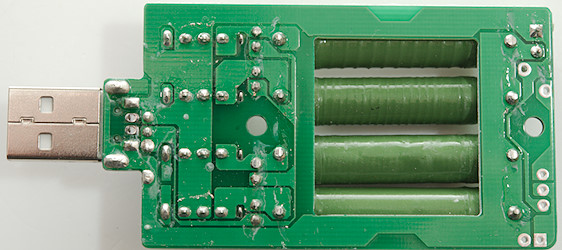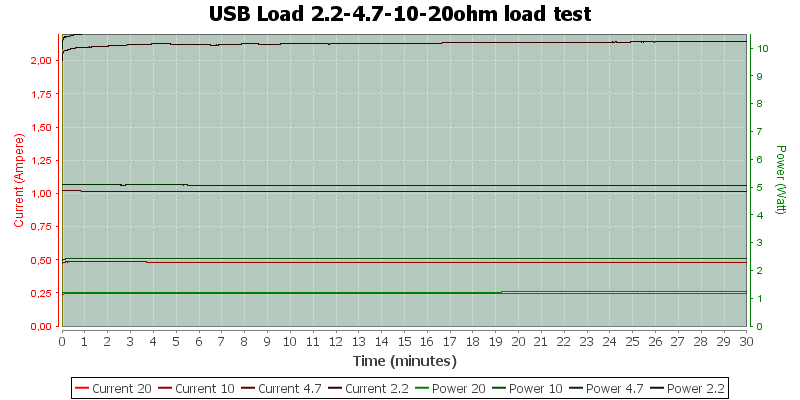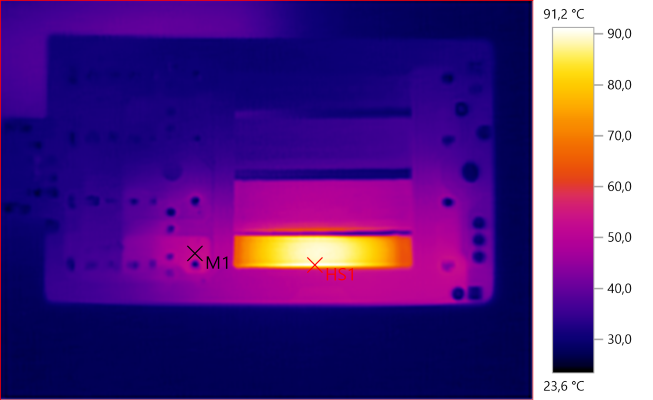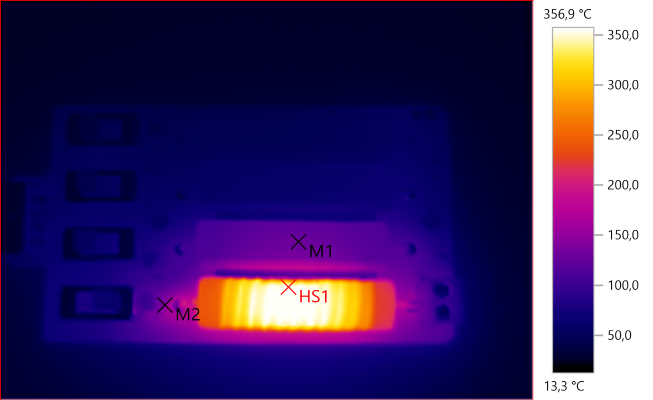USB Load resistor 2.2-4.7-10-20ohm

Official specifications:
- 15 different load currents.
- Resistors: 2.2ohm, 4.7ohm, 10ohm and 20ohm
- Support QC2.0 and QC3.0
I bought it on ebay.
The most interesting detail about this type of load is how hot they get, some power resistor has a working temperature between 200°C and 300°C when fully loaded.

The load was in a plastic bag, no box or instruction sheet was included.

All the leds works in parallel with a single resistor. The led at the usb connector is on when power is connected and uses about 0.7mA at 5V. The other leds will turn on when the switch for that resistor is turned on.
There are holes for getting fan power and a switch to select between full input voltage or a resistor in series with the fan. That would be a very good idea if it is used for more than a few minutes at a time.







The resistors after the test below, they are very good at handling high temperature, but the 2.2ohm resistor has changed a bit.
Load testing
- The usb connector is NOT coded and Quick Charge or other signals must be generated with a trigger placed between this load and the tested power supply.
- The higher value resistors in the load can be used with higher voltage.
- Current in 2.2ohm resistor changes 2.7% during the 30 minute test
- Current in 4.7ohm resistor changes 0.8% during the 30 minute test
- Current in 10ohm resistor changes 0.23% during the 30 minute test

Being a resistor the current will depend on voltage.

As expected the load current and power is stable with a resistor, except for a small drop due to temperature.
20ohm resistor

M1: 48,9°C, M2: 48,7°C, HS1: 90,5°C
Even the 20ohm resistor gets rather warm.

M1: 52,4°C, HS1: 91,2°C
10ohm resistor

M1: 70,4°C, M2: 69,0°C, HS1: 145,1°C

M1: 74,4°C, HS1: 143,2°C
4.7ohm resistor

M1: 79,2°C, M2: 97,7°C, HS1: 240,5°C
This is a very warm resistor, but probably still within its rating.

M1: 113,1°C, HS1: 239,2°C
2.2ohm resistor

M1: 129,4°C, M2: 144,1°C, HS1: 356,9°C
This temperature is too hot for the resistor.
Note: Meter is maxed out and cannot show the hottest spot.

M1: 125,8°C, HS1: 356,9°C
Note: Meter is maxed out and cannot show the hottest spot.
Conclusion
The load works as expected and is an easy way to check if an usb power supply or power bank can deliver rated current (together with a usb meter), but it is not really useable for testing over longer time.
It is a very bad idea to touch the resistors or near them when it is working.
Notes
QC3.0/2.0 trigger (No display)
USB meter: QC2-3-MTK-PE Trigger J7-t



















